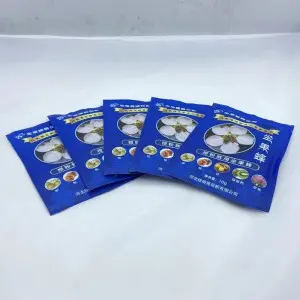Oct . 14, 2024 12:14 Back to list
Pollen Harvesting Techniques for Male Kiwifruit Flowers in Agricultural Production
Pollen Collection of Male Flowers of Kiwifruit Factories An Essential Process for Optimal Yield
Kiwifruit, known for its vibrant green interior and unique taste, has gained popularity worldwide, not only for its flavor but also for its nutritional benefits. However, the successful cultivation of kiwifruit relies heavily on the effective pollination of its flowers, particularly the male flowers. The process of pollen collection from male flowers is an essential practice employed in kiwifruit factories to enhance fruit set and ultimately increase yield. This article explores the significance of pollen collection, the methodology involved, and the various benefits it offers to kiwifruit production.
Understanding Kiwifruit Pollination
Kiwifruit is dioecious, meaning that it has separate male and female plants. For effective pollination and fruit development, the presence of male flowers is crucial. Male flowers produce pollen that must be transferred to the stigma of female flowers to achieve fertilization. In a natural setting, pollinators such as bees facilitate this transfer. However, in commercial kiwifruit production, relying solely on natural pollinators can be insufficient. This is where pollen collection plays a pivotal role.
The Importance of Pollen Collection
The strategic collection of pollen from male flowers ensures that there is an adequate supply for the fertilization of female flowers during the blooming season. By gathering pollen at its peak quality, kiwifruit factories can enhance the likelihood of effective cross-pollination. The timing of pollen collection is vital; it needs to coincide with the flowering stages of female plants to maximize the chances of fruit set.
Moreover, pollen collection allows for the possibility of controlled pollination, which can lead to higher-quality fruit. Factory-managed collections can also facilitate the transportation of pollen to areas where natural pollinators may be limited, thus overcoming geographical limitations in kiwifruit production.
Methodology of Pollen Collection
The process of pollen collection in kiwifruit factories involves several meticulous steps. Initially, male flowers are identified and selected for their health and pollen viability. This selection process is critical, as it directly correlates with the quality of the pollen being collected.
pollen collection of male flowers of kiwifruit factories

Once selected, the male flowers undergo a careful harvesting procedure. Pollen is typically collected when the anthers are fully mature and the pollen grains are ripe for dispersal, which is often during early morning hours when humidity levels are low. This timing helps in ensuring that the pollen remains dry and viable.
The collected pollen is then stored in controlled conditions to maintain its viability until it is ready for use. Factors such as temperature, humidity, and light exposure are carefully managed during storage to preserve the quality of the pollen.
Benefits of Pollen Collection
The benefits of pollen collection from male kiwifruit flowers are manifold. First and foremost, it significantly enhances pollination efficiency, leading to a higher rate of fruit set. This is particularly important in regions where environmental factors may inhibit the activity of natural pollinators.
Additionally, controlled pollen application can result in a more uniform fruit development, improving the overall consistency of produce quality. By utilizing high-quality pollen from selected male plants, farmers can improve the genetic diversity of the fruits, thereby enhancing their resilience and adaptability to varying climatic or soil conditions.
Furthermore, effective pollen collection and application can also lead to increased marketability due to the better visual and taste qualities of the fruit. This can ultimately lead to higher economic returns for farmers and producers.
Conclusion
Pollen collection from male flowers in kiwifruit factories is a crucial agricultural practice that significantly impacts physical and economic outcomes for kiwifruit producers. By ensuring that female flowers receive sufficient and high-quality pollen, growers can increase fruit set and improve the overall quality of the fruit produced. As the demand for kiwifruit continues to rise, optimizing pollination processes like pollen collection will remain a top priority in ensuring sustainable and productive kiwifruit cultivation. The future of kiwifruit farming lies in the hands of those who understand and effectively implement these essential practices.
-
Artificial Pollination Solutions for All Plant Pollen Types
NewsJul.29,2025
-
Premium Plant Pollen for Pure Pollination & Pollen Block Solutions
NewsJul.29,2025
-
Artificial Pollination Solutions for Efficient Crop Yields
NewsJul.28,2025
-
Premium Cherry Pollen for Pure Pollination & Different Types of Pollen
NewsJul.28,2025
-
Eco-friendly Fruit Paper Bags with Pollen Block Technology
NewsJul.26,2025
-
Premium Kiwi Pollen for Sale – Fresh Male Kiwi Pollen Supplier
NewsJul.25,2025